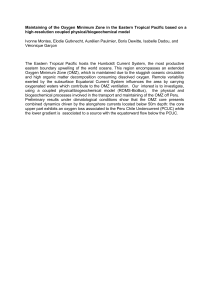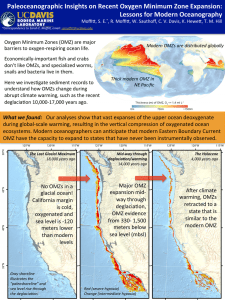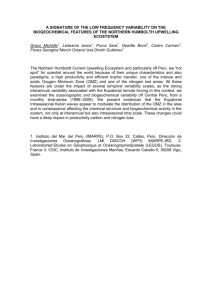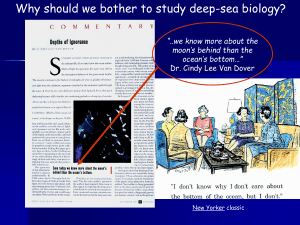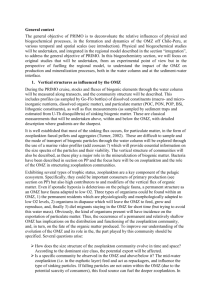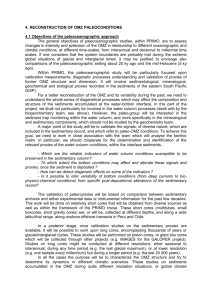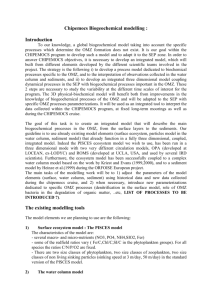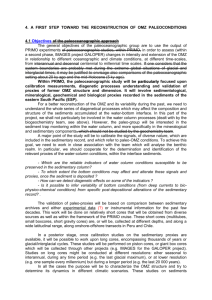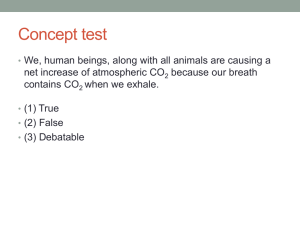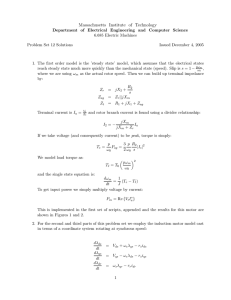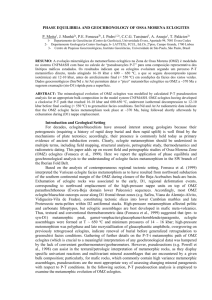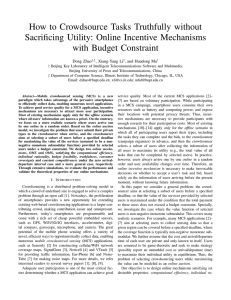Letter of Intent to IMBER Steering Committee
advertisement
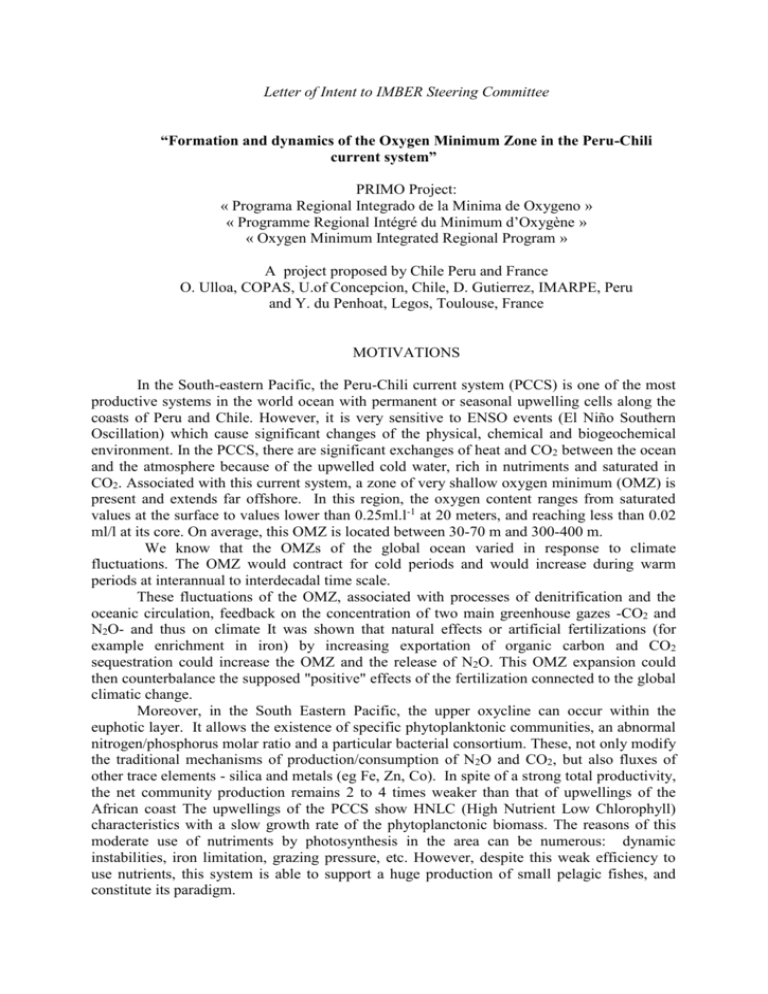
Letter of Intent to IMBER Steering Committee “Formation and dynamics of the Oxygen Minimum Zone in the Peru-Chili current system” PRIMO Project: « Programa Regional Integrado de la Minima de Oxygeno » « Programme Regional Intégré du Minimum d’Oxygène » « Oxygen Minimum Integrated Regional Program » A project proposed by Chile Peru and France O. Ulloa, COPAS, U.of Concepcion, Chile, D. Gutierrez, IMARPE, Peru and Y. du Penhoat, Legos, Toulouse, France MOTIVATIONS In the South-eastern Pacific, the Peru-Chili current system (PCCS) is one of the most productive systems in the world ocean with permanent or seasonal upwelling cells along the coasts of Peru and Chile. However, it is very sensitive to ENSO events (El Niño Southern Oscillation) which cause significant changes of the physical, chemical and biogeochemical environment. In the PCCS, there are significant exchanges of heat and CO2 between the ocean and the atmosphere because of the upwelled cold water, rich in nutriments and saturated in CO2. Associated with this current system, a zone of very shallow oxygen minimum (OMZ) is present and extends far offshore. In this region, the oxygen content ranges from saturated values at the surface to values lower than 0.25ml.l-1 at 20 meters, and reaching less than 0.02 ml/l at its core. On average, this OMZ is located between 30-70 m and 300-400 m. We know that the OMZs of the global ocean varied in response to climate fluctuations. The OMZ would contract for cold periods and would increase during warm periods at interannual to interdecadal time scale. These fluctuations of the OMZ, associated with processes of denitrification and the oceanic circulation, feedback on the concentration of two main greenhouse gazes -CO2 and N2O- and thus on climate It was shown that natural effects or artificial fertilizations (for example enrichment in iron) by increasing exportation of organic carbon and CO2 sequestration could increase the OMZ and the release of N2O. This OMZ expansion could then counterbalance the supposed "positive" effects of the fertilization connected to the global climatic change. Moreover, in the South Eastern Pacific, the upper oxycline can occur within the euphotic layer. It allows the existence of specific phytoplanktonic communities, an abnormal nitrogen/phosphorus molar ratio and a particular bacterial consortium. These, not only modify the traditional mechanisms of production/consumption of N2O and CO2, but also fluxes of other trace elements - silica and metals (eg Fe, Zn, Co). In spite of a strong total productivity, the net community production remains 2 to 4 times weaker than that of upwellings of the African coast The upwellings of the PCCS show HNLC (High Nutrient Low Chlorophyll) characteristics with a slow growth rate of the phytoplanctonic biomass. The reasons of this moderate use of nutriments by photosynthesis in the area can be numerous: dynamic instabilities, iron limitation, grazing pressure, etc. However, despite this weak efficiency to use nutrients, this system is able to support a huge production of small pelagic fishes, and constitute its paradigm. It is recognized that the presence of a major OMZ determines the characteristics of most pelagic as well as benthic populations in this area. Many studies have illustrated the influence of the presence of deoxygenized water on the vertical distribution of the pelagic communities and this, 'from plankton to tuna'. The dissolved oxygen concentration is thus a key factor in structuring the ecosystems and the presence of a OMZ is characteristic of the PCCS. To date, there were however only a few studies that studied in detail the processes related to the formation and dynamics of the OMZ in the PCCS. We proposed to study this complex system. Our approach will be process-oriented and multi disciplinary, which implies to investigate the whole spectrum of the OMZ variability, from daily to interannual timescales. Mains objectives will be to understand what physical, biological and biochemical processes are involved in the formation and variability of the OMZ of the South East Pacific, on time scales of a few days to the interannual time scales for the present ocean and assess the impact of its extension (or contraction) on productivity, on biological processes in the water column and on sedimentation. Such international study fit directly to main objectives of IMBER as Theme1 (Issue1,2&3), Theme2 (Issue1), Theme3 (Issue2). It is why this letter of intent is send for consideration by the IMBER SSC. The international group had met 4 times since 2003 and are refining actually its Science Plan and Implementation Strategy (SPIS). The SPIS will integrate different actions based on in situ observations at different time scale and in different reservoirs (water column – particular and dissolved phases – sediments), laboratory experiments and numerical modelling. Strategy will include: i) oceanographic cruise for snapshot studies, ii) a long term component using moorings and sediment cores, iii) a modelling component based on state of the art physics and biogeochemistry schemes. It is also worth to note the project constitutes also a pertinent framework to improve proxies useful for paleoceanographic reconstructions in productive margins. Moreover, paleooceanographic projects in the framework of IMAGE program have been proposed with same study sites off Peru, aiming at reconstructing OMZ extension and denitrification over Glacial-Interglacial periods.
